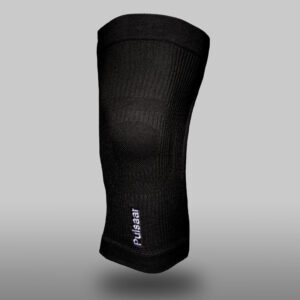Uncategorized
What you need to know to play sports in cool weather
Not everyone goes to the heart of sports in cold and wet weather, as it is now in the cold winter months. However, the weather should not limit the amount of physical activity. A sufficient amount of physical activity is important in all seasons. You can always find various alternatives to outdoor sports activities, for example, in the winter months you can switch to training in the gym, swimming in the pool. However, for many, even during the cold winter months, outdoor sports remain relevant – running, Nordic walking, cycling, ice skating and skiing. In this blog post, we will discuss various tips and important things to think about if you plan to do sports outdoors in the cool weather of winter.
Playing sports in cold weather not only helps burn excess calories and fat, but can also be an effective method of ingesting vitamin D on winter sunny days. Athletic activities in winter can help improve the immune system, thereby helping in the fight against flu and viruses.
Cold weather, rain, snow, ice, wind – all this can scare away sportspeople. However, you can prepare for sports during the chilly winter months by approaching the matter purposefully and strategically. Playing sports is a very safe activity, even in cold weather. Before you go outside for a workout, it is important to check the weather forecast and the main thing – to dress properly, wear a warm hat and gloves, try to leave as little uncovered layer of skin as possible, because heat is passed through it.
When going in for sports outdoors, it is important to stay dry and warm, which can be facilitated with the help of appropriate clothing. A little preparation for the joys of winter sports can help to avoid the adverse effects caused by the cold – hypothermia and frostbite.
Appropriate clothing is the most important strategy for playing sports in cool weather.
Special attention should be paid to clothing, which would be suitable for the particular weather conditions. It is advisable to dress in several layers, and not just one thick layer. This allows you to take off the top layer of clothes at any time if you get too warm, thereby reducing sweating. If it gets colder, you can always put on this layer of clothes back. The chosen clothing should be made of a suitable material that does not get wet and helps to store heat – for example, wool, synthetic fleece material, polypropylene, etc. Cotton clothes are not recommended, as they absorb sweat and wetness from rain and snow.
During rain and snow, it is recommended to wear waterproof clothing that also protects from the effects of the wind. Recommended materials are nilon and Gore-Tex. At very low temperatures, it is also recommended to protect the face, head, hands so that heat does not pass through the skin. Care must be taken to ensure that the legs are also warm.
Cotton material is not recommended, as it absorbs moisture from sweating and rain, which will make you feel cold, as well as wet clothing will add extra weight. In the first layer, it is important to pull the material that will pull moisture away from the skin layer. Various breathable synthetic materials will come in handy here. At the next level, it is useful to wear a warm outfit of fleece material. It is recommended to wear a waterproof layer of clothing on the top layer
It is also important not to dress too warmly in one thick layer. Because during sports, the body will generate heat on its own. If it is too hot , sweating will increase, which will accelerate the heat output. This is one of the worst options after the end of training – a sharp cooling of the body may begin.
It is important to protect the head, hands, feet, ears, and face from the cold.
In cold weather, blood circulation to the periphery decreases and is concentrated closer to the core of the body.
Therefore, it is necessary to protect the hands, feet, and head from the cold. For example, on the hands you can first wear a layer of breathable gloves, then thicker gloves of wool or fleece material. It is recommended to wear shoes larger than the size so that they also fit thicker thermal socks.
What are the signs of hypothermia?
Hypothermia denotes a condition that the core temperature of the body has dropped below 35 degrees celsius. The state of hypothermia occurs when the body is not able to produce enough heat. The state of hypothermia can lead to fatal consequences, so it is important to know the signs of hypothermia:
- Lack of coordination
- State of confusion
- Speech changes
- Cold limbs
- Trembling
- Increased drowsiness
At severe hypothermia, trembling can stop, blood pressure decreases and heart rate increases, muscle stiffness, fatigue and impaired consciousness are observed.











